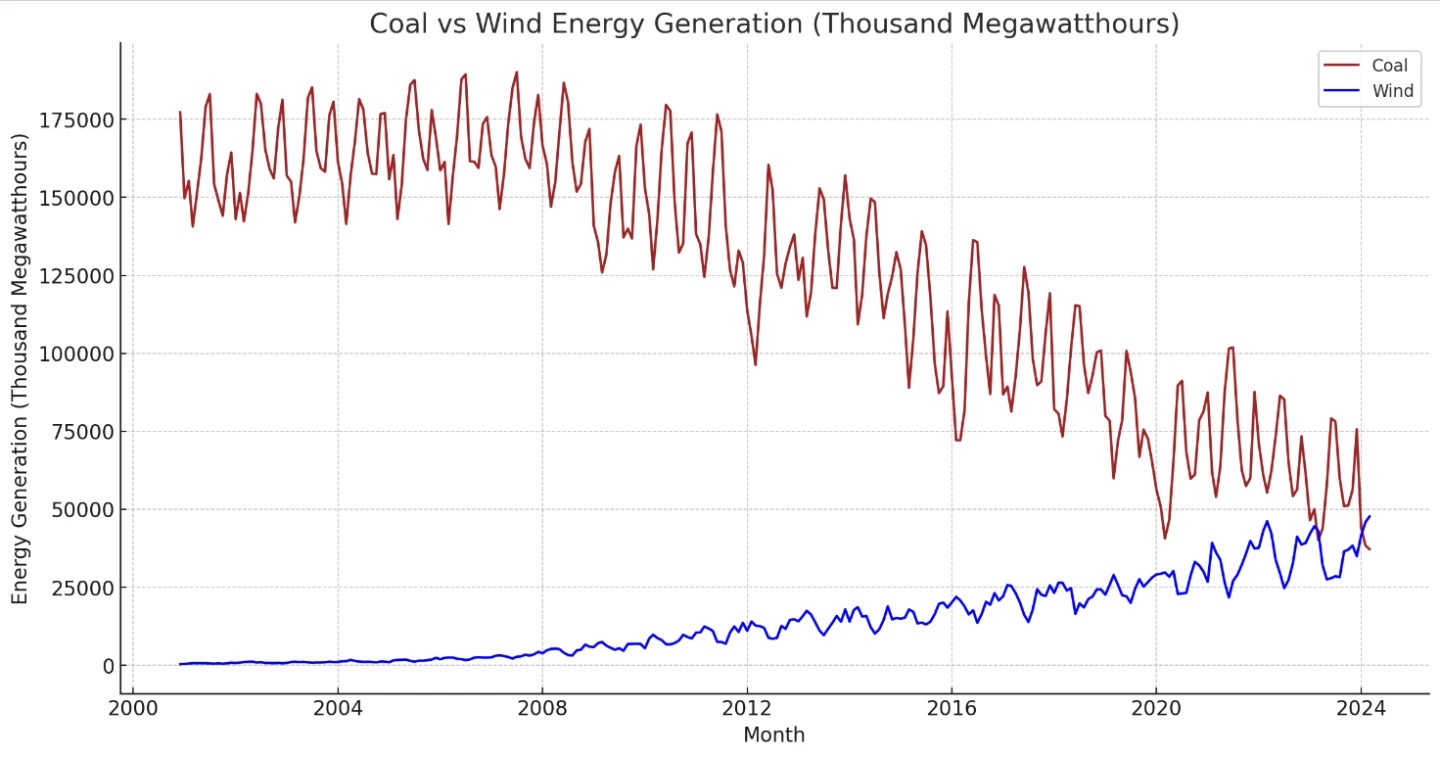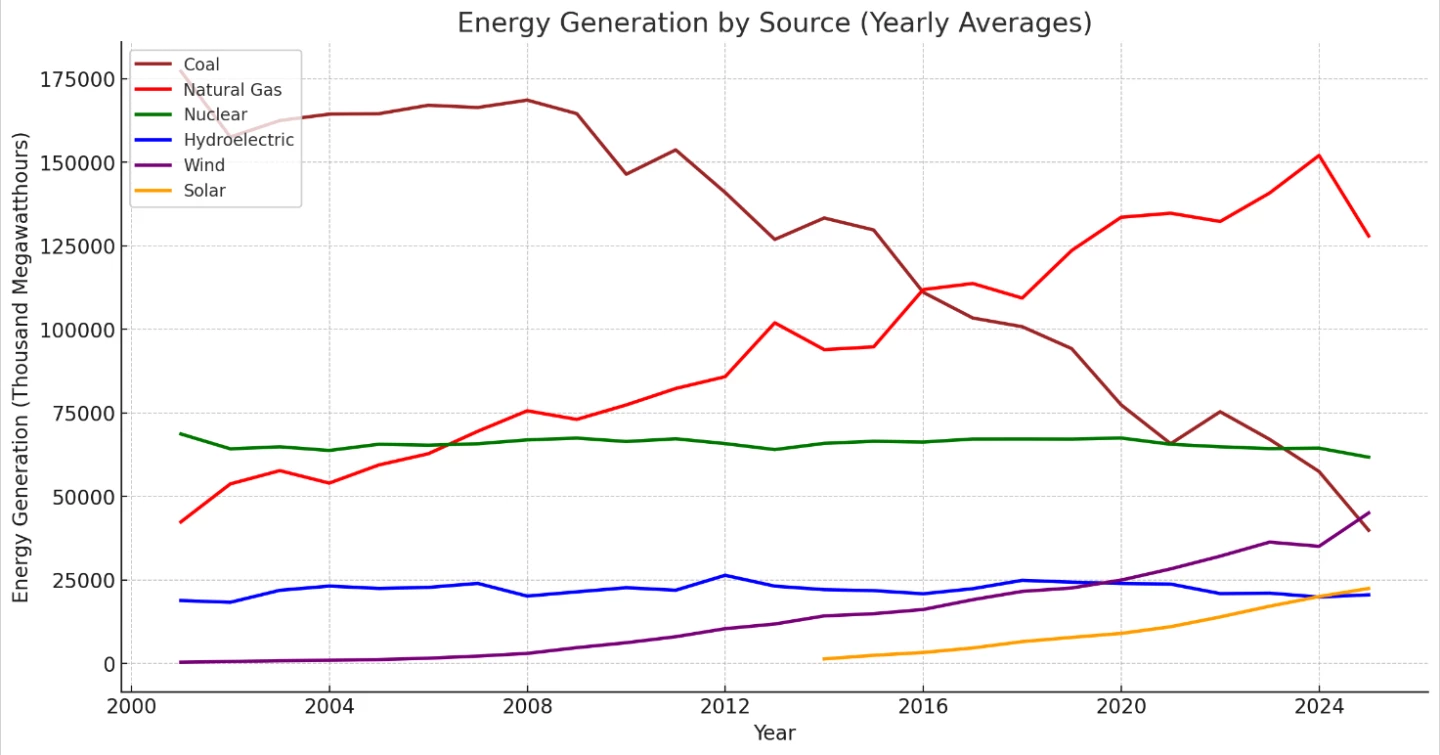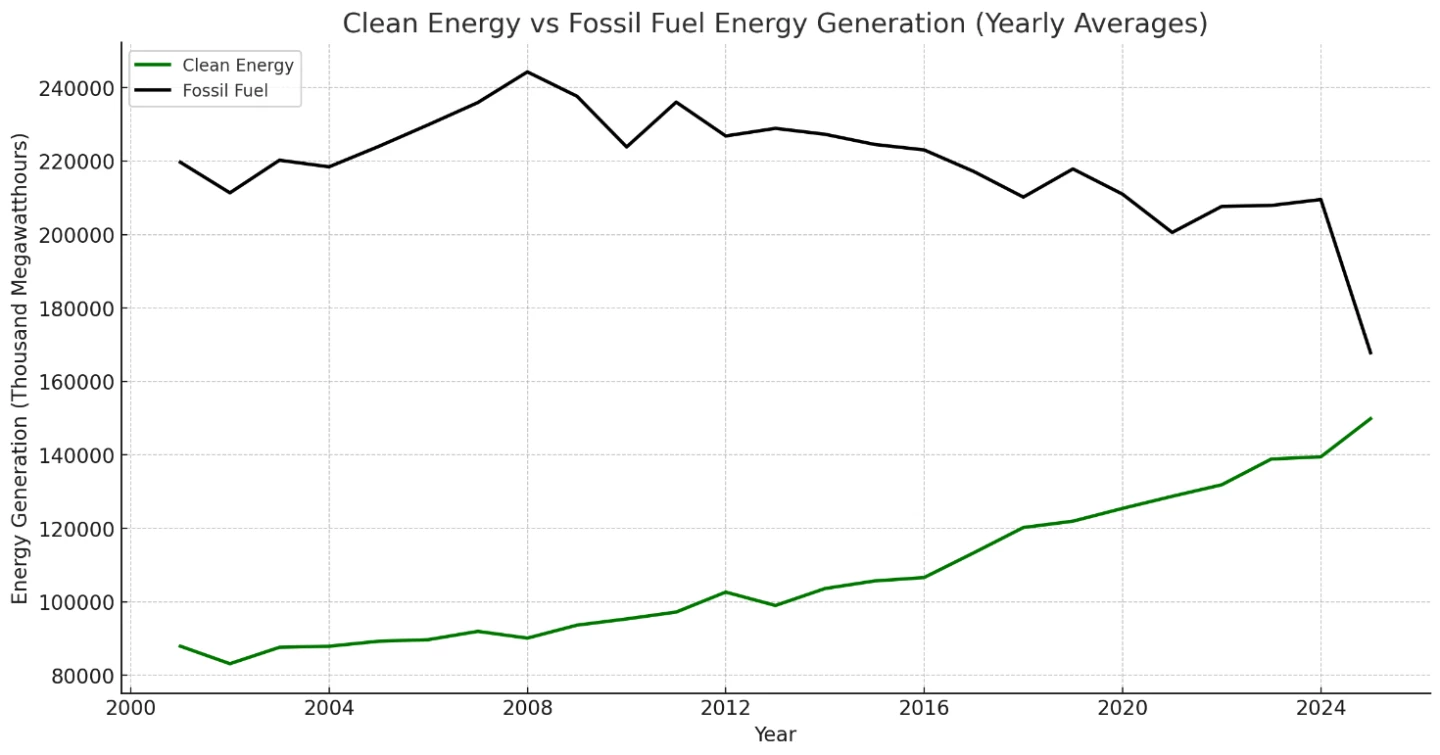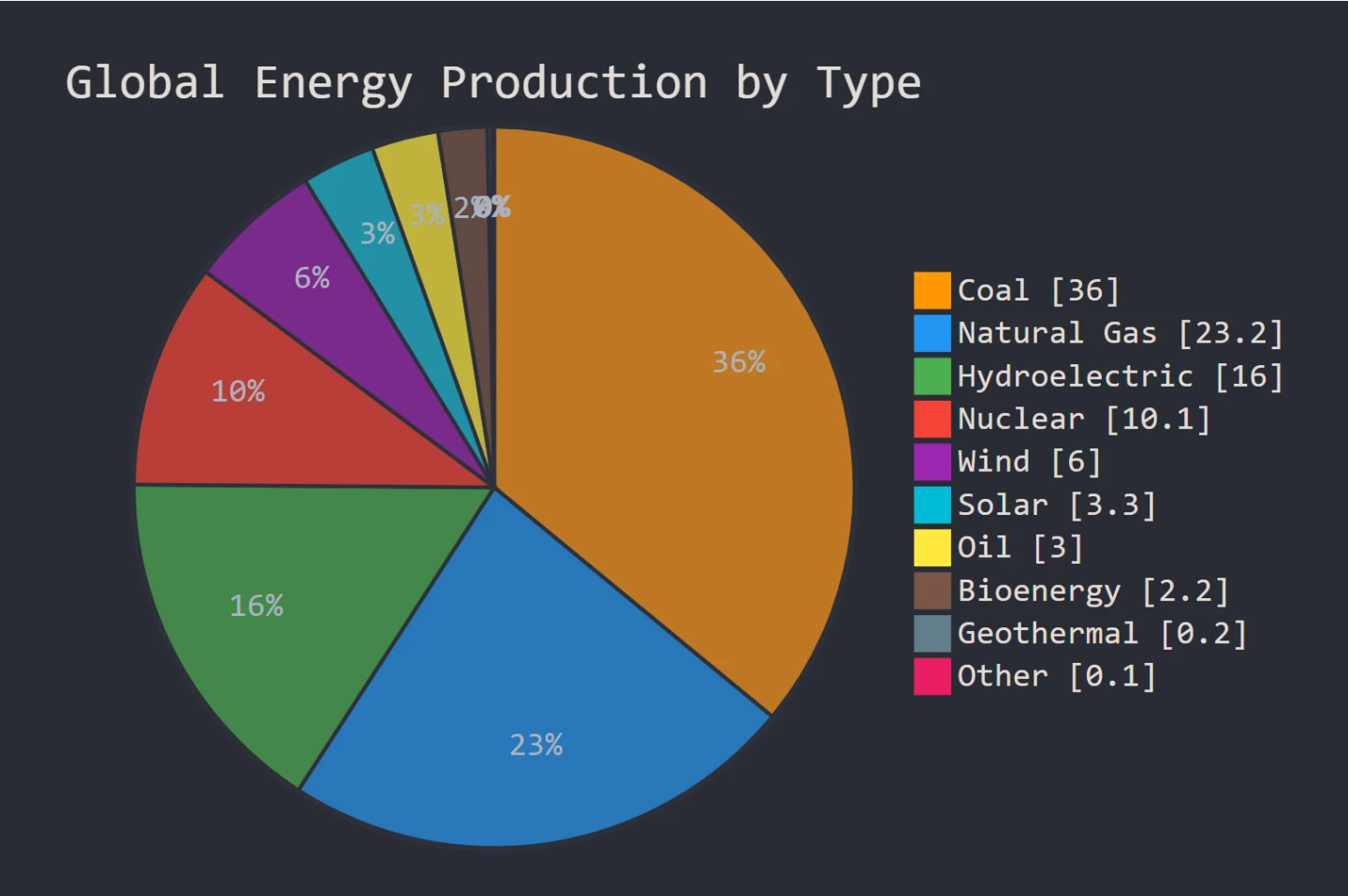Good news for planet Earth, at least as far as the data shows for the United States. According to the US Energy Information Administration, in the five years from 2019 to 2024, in March and April specifically, electricity production using wind power has almost doubled, significantly outdoing generation from coal-fired power plants in the US.
Data shows wind produced about 25.8 GWh in March 2019 and 29 GWh in April 2019, jumping to 45.9 and 47.6 GWh in March and April of this year, respectively. In that same period, coal-produced electricity has dropped from about 80 and 60 GWh in March and April of 2019, respectively, down to roughly 38.3 and 37.2 GWh in 2024.
That's a whopping 28% more wind power than coal power for those two months in 2024 compared to 2019. And charting monthly data from the US Energy Information Administration (EIA) over the last 22 years shows a remarkable drop in coal-fired energy to accompany a steady rise from wind:

Mind you, once you include other energy sources the picture's a lot less pretty; the decline in coal has been taken up largely by natural-gas-fired plants. Natural gas burns a lot cleaner than coal, and thus has been viewed as a kind of "diet fossil fuel" in the race to decarbonize.
Unfortunately, this view oversimplifies the issue. Natural gas is mostly methane, and it has plenty of chances to exert an extremely powerful greenhouse effect (more than 80 times stronger than CO2 over a 20-year timespan) on the atmosphere before it gets burned. It leaks into the open air at the drill site, and at poorly-sealed pipeline joints. And it's deliberately vented or flared into the atmosphere during the practical operation of wells, pipes and other infrastructure. We're not talking small amounts, either – it's around 8% of all methane produced, according to some estimates.
On the other hand, many natural-gas-fired plants can eventually be converted to burn various percentages of green hydrogen as fuel, up to 100% in some cases, so there's a potential pathway to decarbonization there, where no such pathway exists for a coal-fired plant.

Crunching the numbers again, we can treat coal and gas as fossil fuels energy, and combine nuclear, hydro, wind and solar as "clean energy" – ignoring some inconvenient issues with things like hydro, which uses so much cement in its dam walls that it can take decades for a hydro plant to become a climate-positive investment.
Here, the picture looks a lot more positive again:

Why is this good news?
With electricity demands on the rise by the minute, renewable sources of electricity are becoming more and more critical to continue to power our increasingly technology-dependent day-to-day lives with less impact on air, land and water quality.
Record-setting high temperatures have ravaged the United States this July and the need for electricity is at an all-time high, especially as the need to kick on the AC is rising with the temperatures.
On July 7th, 2024, Death Valley, California cranked up the heat to a crayon-melting 129 °F (53.9 °C). For the meat-eaters out there, that's a pretty ideal internal temperature for a medium-rare steak and only 5 °F (2.8 °C) shy of the hottest ever temperature recorded on Earth (ironically, in Furnace Creek, Death Valley back in 1913). Also on July 7th, 2024 and a state away, Las Vegas, Nevada set its all-time record temperature of 120 °F (48.9 °C). The very next day, Palm Springs, California recorded a searing 122 °F (50 °C), the highest ever recorded temp on any July 8th in US history.

The need to keep us cool isn't the only high-energy consumption area that's growing. AI technologies are extremely power-hungry. GPUs (Graphics Processing Unit), the same tech that gamers use for the best graphics and fastest frames per second) are what's used to compute all the complex tasks AI requires to function. GPUs use about four times as much power and produce more heat than conventional CPUs (central processing units, your computer's brain), meaning the data centers that house them require better cooling systems as well. Effectively, more intelligence requires more power.
If a hyperscale data center were to swap out all its conventional CPUs for GPUs, it could quadruple its immediate power needs up as high as 400-600 MW. The average nuclear power plant produces 1,000 MW or 1 GW. These aren't small numbers. The average US household uses 10.5 MW/h per year.
Cryptocurrencies also use GPUs in huge data centers for calculating complex math equations to validate transactions, consuming copious amounts of electricity. A single mining machine capable of running 'efficiently' can use nearly as much power as your home AC unit per day. As of now, 60% of bitcoin transactions alone rely on non-renewable energy; primarily coal. That doesn't take into account the thousands of other coins that currently exist and the thousands more that will pop up in the near future.
The International Energy Agency released a publication this year stating that it expects data center energy demands will at least double from 2022 to 2026.
The rise of clean energies like wind, solar, hydroelectric, geothermal, ocean tidal and wave energy, and even ocean thermal energy conversion, are taking away the demand to burn fossil fuels that can take hundreds of millions of years to replenish themselves, if ever. Not to mention, over one-third of all global CO2 emissions come from producing electricity.

There are countries that do it better
In Norway, 98% of all electricity production comes from renewable sources, making it a global leader. Nearly all of Norway's power comes from its 1,600 hydroelectric power stations, while wind power accounts for about 10% of the total.
Nearly 50% of all electricity produced in China for China comes from renewables. In fact, China has the world's largest installations of renewable power generation like wind, solar and tidal and wave power and accounts for about 31% of the entire world's renewable energy production. It has nearly as much solar power as all other countries combined. China even recently built a twin-rotor floating wind turbine that can harness hurricane-force winds for electricity production.
Qin Haiyan, the secretary-general of the Chinese Wind Energy Association, says that clean energy, including wind power, is preferred over fossil fuels in China, not simply because of the 'green' factor, but because it's less expensive compared to traditional fossil fuels like coal.
Also this March, China produced over 100 TWh of wind power, as much as all of Europe and North America combined.
Roughly 60% of all electricity produced in the US comes from fossil fuels. For the US to produce 28% more wind power in March and April versus coal-fired power sounds like a step in the right direction but with a lot more work ahead of us.
Sources: EIA.gov, World Energy, PRC State Council, Our World in Data









